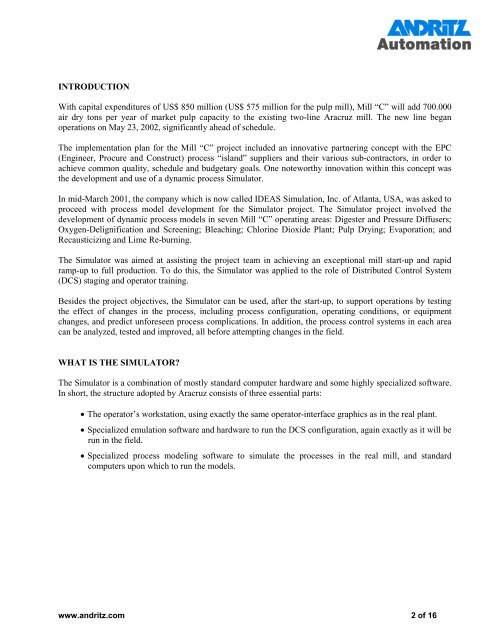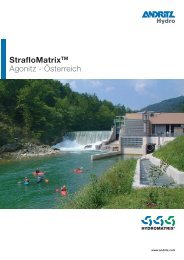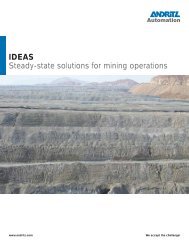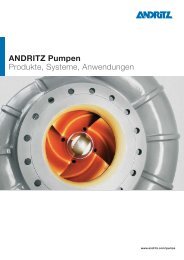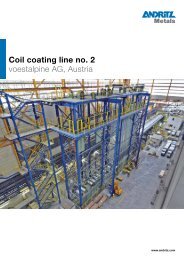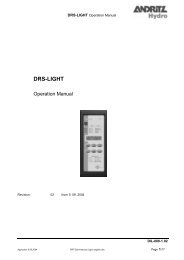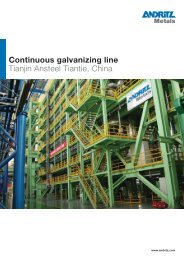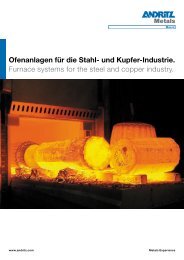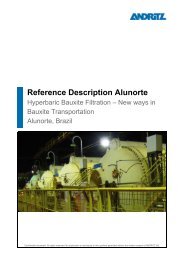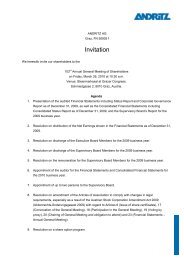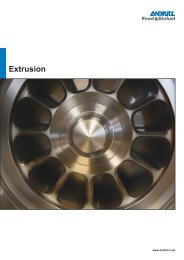Aracruz Uses a Dynamic Simulator for Control System ... - Andritz
Aracruz Uses a Dynamic Simulator for Control System ... - Andritz
Aracruz Uses a Dynamic Simulator for Control System ... - Andritz
Create successful ePaper yourself
Turn your PDF publications into a flip-book with our unique Google optimized e-Paper software.
INTRODUCTION<br />
With capital expenditures of US$ 850 million (US$ 575 million <strong>for</strong> the pulp mill), Mill “C” will add 700.000<br />
air dry tons per year of market pulp capacity to the existing two-line <strong>Aracruz</strong> mill. The new line began<br />
operations on May 23, 2002, significantly ahead of schedule.<br />
The implementation plan <strong>for</strong> the Mill “C” project included an innovative partnering concept with the EPC<br />
(Engineer, Procure and Construct) process “island” suppliers and their various sub-contractors, in order to<br />
achieve common quality, schedule and budgetary goals. One noteworthy innovation within this concept was<br />
the development and use of a dynamic process <strong>Simulator</strong>.<br />
In mid-March 2001, the company which is now called IDEAS Simulation, Inc. of Atlanta, USA, was asked to<br />
proceed with process model development <strong>for</strong> the <strong>Simulator</strong> project. The <strong>Simulator</strong> project involved the<br />
development of dynamic process models in seven Mill “C” operating areas: Digester and Pressure Diffusers;<br />
Oxygen-Delignification and Screening; Bleaching; Chlorine Dioxide Plant; Pulp Drying; Evaporation; and<br />
Recausticizing and Lime Re-burning.<br />
The <strong>Simulator</strong> was aimed at assisting the project team in achieving an exceptional mill start-up and rapid<br />
ramp-up to full production. To do this, the <strong>Simulator</strong> was applied to the role of Distributed <strong>Control</strong> <strong>System</strong><br />
(DCS) staging and operator training.<br />
Besides the project objectives, the <strong>Simulator</strong> can be used, after the start-up, to support operations by testing<br />
the effect of changes in the process, including process configuration, operating conditions, or equipment<br />
changes, and predict un<strong>for</strong>eseen process complications. In addition, the process control systems in each area<br />
can be analyzed, tested and improved, all be<strong>for</strong>e attempting changes in the field.<br />
WHAT IS THE SIMULATOR?<br />
The <strong>Simulator</strong> is a combination of mostly standard computer hardware and some highly specialized software.<br />
In short, the structure adopted by <strong>Aracruz</strong> consists of three essential parts:<br />
• The operator’s workstation, using exactly the same operator-interface graphics as in the real plant.<br />
• Specialized emulation software and hardware to run the DCS configuration, again exactly as it will be<br />
run in the field.<br />
• Specialized process modeling software to simulate the processes in the real mill, and standard<br />
computers upon which to run the models.<br />
www.andritz.com 2 of 16


